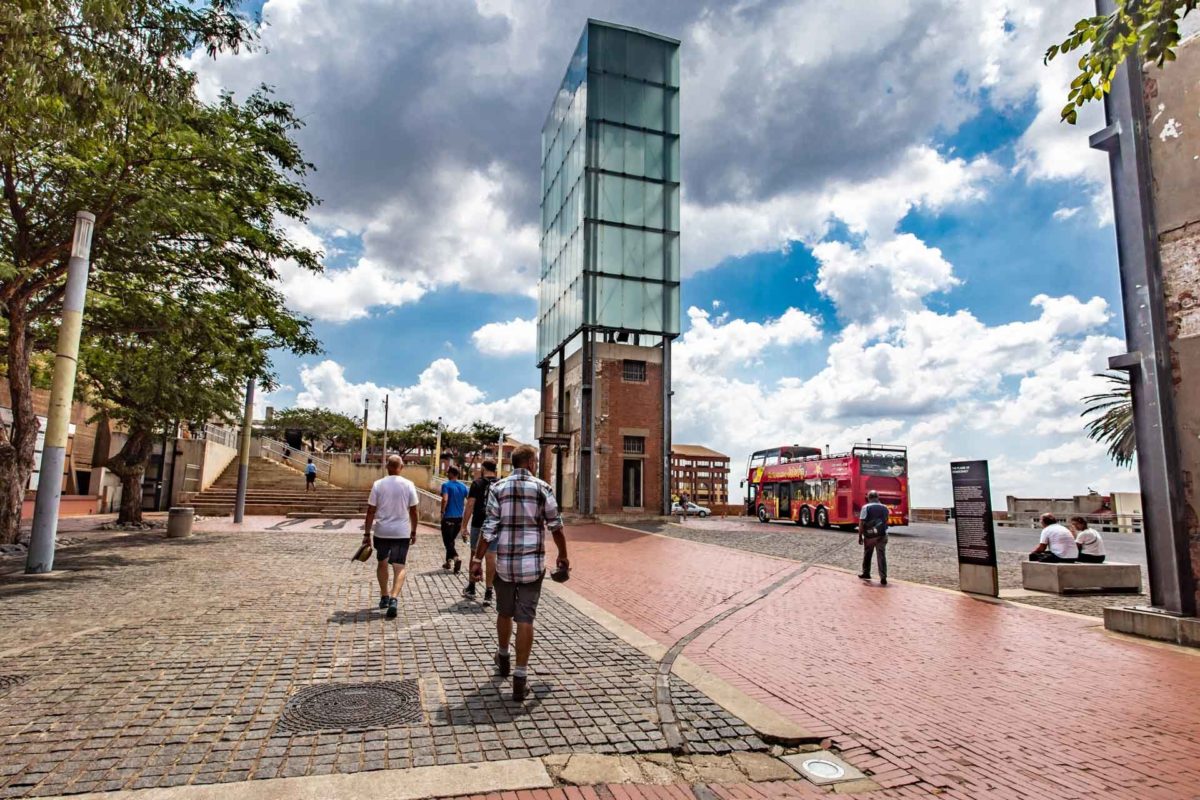The Constitutional Court stands in contrast to other museums on the Constitution Hill precinct. Its architecture is more modern, obviously, but it also offers a tangible shift in energy from the sites of incarceration among which it stands. Situated in close proximity to the Flame of Democracy, it is a symbolic and literal beacon of light.
In 1997, an intensive, international tendering process was opened before a winning design was selected for the new Constitutional Court at Constitution Hill (the court had been housed in temporary accommodation since it was established in 1995).
The successful design was premised on the importance of representing – architecturally and visually – the openness and transparency of the country’s new Constitution and premised on the theme of lekgotla, which refers to the traditional African approach of conducting justice beneath a tree. The latter is portrayed in the foyer’s slanting columns, representing the tree trunks, and large wire leaves suspended from the ceiling, as well as the dappled carpeting on the court’s floor. The notion of transparency is evident in the court’s low-lying ribbon of glass windows, which affords citizens a view of the court, while also reminding judges of their responsibility to all South Africans.
A total of six materials are used in the building – concrete, timber, steel, stone, glass and light – and their symbolic uses abound. Ask your tour guide for more information. The Constitutional Court also houses an extensive law library and a vast and important collection of art. The judges’ chambers are located in the building’s internal courtyard.
The Constitutional Court was inaugurated at Constitution Hill on Human Rights Day, 21 March 2004.
Since it was established, the court has passed judgement on several landmark cases, including ruling the death penalty to be unconstitutional and granting the same status, entitlements and responsibilities to same-sex marriages as to heterosexual marriages.
Read more on the story of the Constitutional Court.
Share Article

 +27 11 381 3100
+27 11 381 3100

